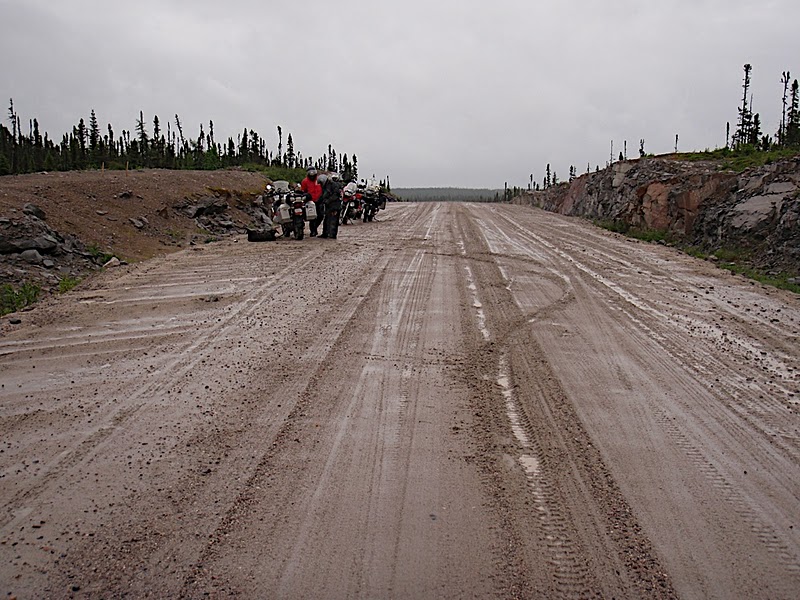Weather
The weather in Canada varies greatly, from temperate in the south to subacrtic and acrtic in the North. As a generalization it can be said that Canada becomes cold and is covered in snow during the winter months, but of course there are exceptions to every statement.
For most of Canada spring begins in April, gravel roads become snow and ice free sometime during this season. Summer starts in June and lasts until early September. Fall consists of September, October and then winter sets in again. The routes desribed are meant to be travelled during the spring, summer and fall seasons.
The temperatures for each season vary greatly from one part the country to the next. The eastern provinces often experience a longer winter and cooler summer time temperatures. Central Canada is prone to high summer temperatures and high humidty. The prairies and eastern mountain ranges offer moderate temperatures and a very low humidity rate. Western Canada is called a rainforest for good reasons, the winter months are typically quite moist. Rain or snow depending on elevation is common during the winter and spring seasons. The northern half of Canada can best be described as arctic weather.
We have reiterated this over and over on the site. Canada is huge and diverse, we cannot begin to describe the weather without making mistakes or generlizations. Fortunatley the internet has several sites where you can check the weather and weather patterns for an area. This saves us the time and saves you from guessing what to expect.
This Canadian government can be very useful
http://www.weatheroffice.gc.ca/canada_e.html
For undertaking one of the overland routes we provide the weather becomes a big factor. Choosing the appropriate date for your trip is quite important. Some routes are best left until spring snow melts are finished, some are best done later in the year when mountain passes will be more likely to be snow free and some are best done early in the season before insects become an issue. The length of daylight varies greatly from region to region and from spring to fall season. There is no real right or wrong, but rather these are all items you should consider when travelling. Travelling in the rainy months or during the the months when the sun sets early can all detract from an expedition. Yes the weather is unpredictable but in todays age with satellite weather forecastings and weather statistics it makes it easier to make an informed choice and to increase your odds of having nice weather.
Weather affects non paved roads and trails in a big way. A road can go from being hard packed and easy to travel to a slick wet beast.
A big allure for many of us who enjoy overland travel is to be out in the elements. Watching the stars at night or sun rises over camp in the morning all sound great. The reality is that at some point the weather will turn bad. Enjoying a few days of cold temperatures, pouring down rain, unexpected snow covered roads, high winds and everything else that mother nature can and will throw at us makes enjoying these time trying to say the least. Preperation is essential to not letting bad weather hamper your expedition. Doing the approrpriate research and then packing and dressing accordingly can turn a bad situation into an enjoyable one.
Weather can and will affect the length of time an expedition will take. The rate of travel and length of travel in a day can change dramtically based on the weather. Again, all part of the research you should do before setting out. For folks new to thsi type of travel things like the wind may not have been a consideration. Not only can it affect your fuel consumption but also your fatigue levels. Gripping the steering wheel with white knuckles while strong cross winds try to blow your vechicle off the road can easily make a drive stressful and will wear you out much faster than a sunny day taking pictures. On a bike wind can be a huge issue. Not only can a cross wind fatigue you, it can create muscle cramps in the neck and your entire body can get a work out leaning into the wind for miles.
If time permits it is a wise person who will sit out the days of bad weather. Not only for safety concerns but also to enjoy a day off when mother nature presents it. Sadly this is not always an option and travel during extreme weather may have to be a reality. We can't stresss enough to be careful.

A common misconception is that sunny days are the best and safest for travelling. Riding into the sun can reduce visibility. Days on end of no rain brings dust into the equation. Many of the roads that the different routes travel are gravel roads that are travelled by logging/mining/industry trucks. These behemoths can create conditions that are very intense to ride in. Similar to white out conditions from snow, dust clouds envelope you and leave you blind. Often times slowing down is not an option as there may be traffic behind you. Take caution and know what is behind you as you enter a dust cloud. Prior to getting into it have a look and know if the road is straight or if it has a corner up ahead.
 With proper planning the weather can be anticipated and with the proper preparation can be enjoyed. We encourage you to do your research and plan and pack accordingly. Let's hope that all days are clear and sunny
With proper planning the weather can be anticipated and with the proper preparation can be enjoyed. We encourage you to do your research and plan and pack accordingly. Let's hope that all days are clear and sunny 
















